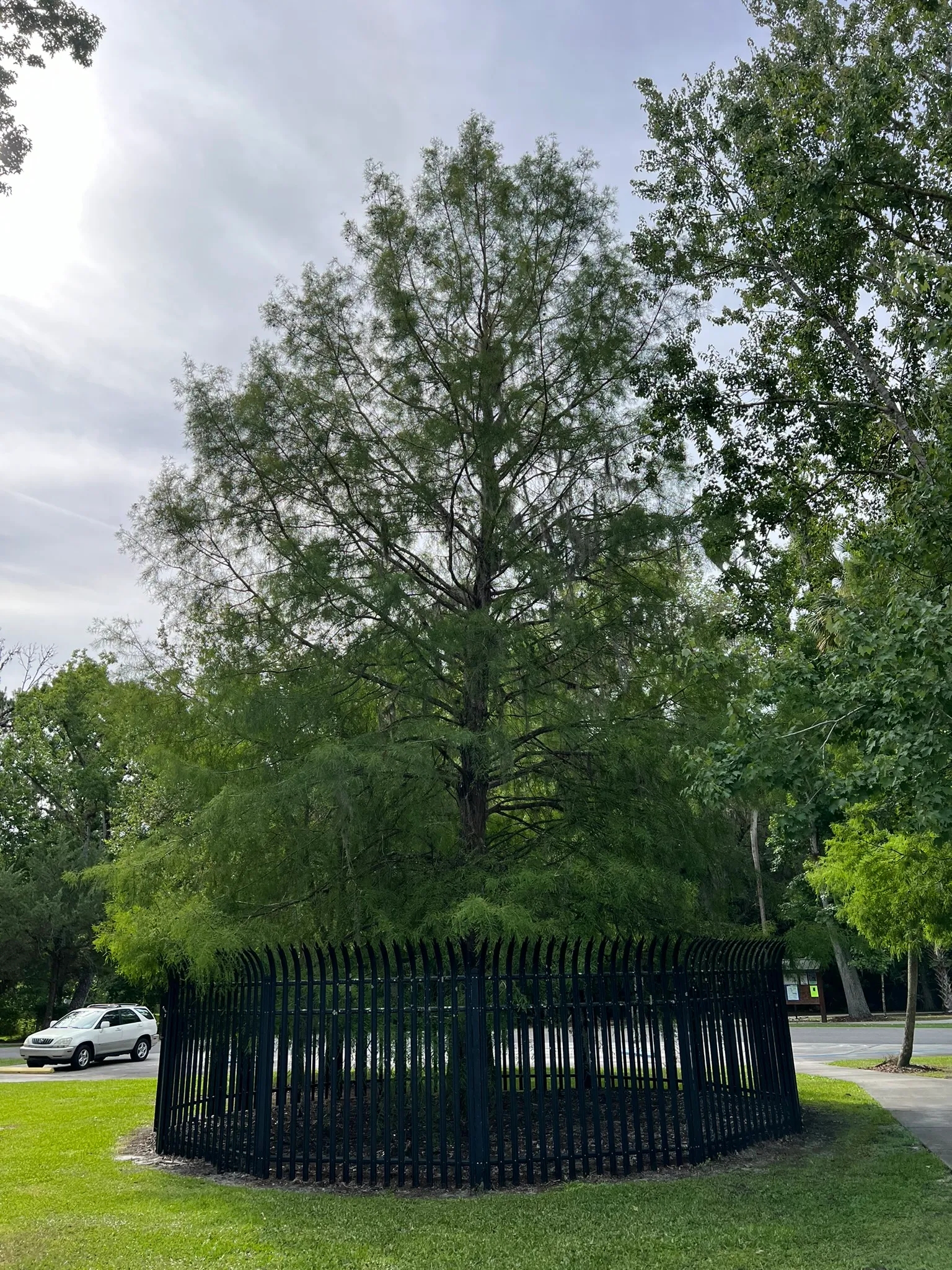Explore the Water Hickory: A Wetland Native with Wildlife Benefits
The Water Hickory (Carya aquatica) is a substantial native deciduous tree.
Sizes Available
Wholesale Only
1 Gallon
$4.00
3 Gallon
$8.00
A tall Water Hickory stands near a waterway, its shaggy bark and glossy leaves characteristic of its adaptation to moist environments and its role in the ecosystem.
Scientific Name: Carya aquatica
Common Name: Water Hickory, Bitter Pecan, Bitter Water Hickory, Swamp Hickory, Water Pignut
Hardiness Zones: 7a through 11b
Height: 80 to 100 feet or more
Spread: 40 to 50 feet
Growth Rate: Slow
Foliage: Spring sees the emergence of dark green, glossy compound leaves. These feature 7 to 15 curved, lance-shaped leaflets with toothed margins. Fine hairs are present along the midrib and major veins on the undersides.
Bark: The bark is smooth and light gray to brown when young. With age, it develops narrow, loose, shaggy, red-tinged scales.
Sun: Full sun to partial shade is suitable for the Water Hickory.
Soil: This tree demonstrates a high tolerance for wet soils and occasional flooding. However, it grows best on moist, well-drained soils near water sources. It can also adapt to loam and sandy soils with high organic matter.
Wildlife Value: The bitter nuts of the Water Hickory are a food source for ducks and other birds.
Why Choose Water Hickory?
Thrives in Wet and Moist Environments:
The Water Hickory is an excellent choice for landscapes with wet soils, pond margins, or stream banks.
Provides Food for Waterfowl and Small Mammals:
While the nuts of the Water Hickory are bitter to humans, they serve as a vital food source for ducks, squirrels, and other wildlife.
Supports a Variety of Moths:
This native hickory acts as a host plant for the larvae of several beautiful moth species, including the iconic Luna moth.
Environmental Benefits of Planting Water Hickory
This data is based on US Averages of healthy and mature trees over a 20-year period.
Check out the USDA’s MyTree Tool to input your custom location data.

CO2 Offset
A single water hickory can offset the CO₂ emissions produced by driving an average gas-powered car for 15,451 miles.

Water Filtration
A single water hickory can absorb enough stormwater to fill 1,750 bathtubs, reducing erosion, runoff, and supporting transpiration.

Removes Air Pollution
A single water hickory removes as much air pollution as the weight of 174 smartphones.
Featured Projects
Central Florida Lands and Timber Nursery, LLC. is a wholesale nursery specializing in a wide array of Florida native trees. With an inventory of over 2 million container-grown trees, CFLTN, LCC can meet the needs of large-scale reforestation, mitigation, and landscaping projects throughout the Southeast region.
Phone
(386) 294-1211
Address
3087 North County Road 53 Mayo, Florida 32066








